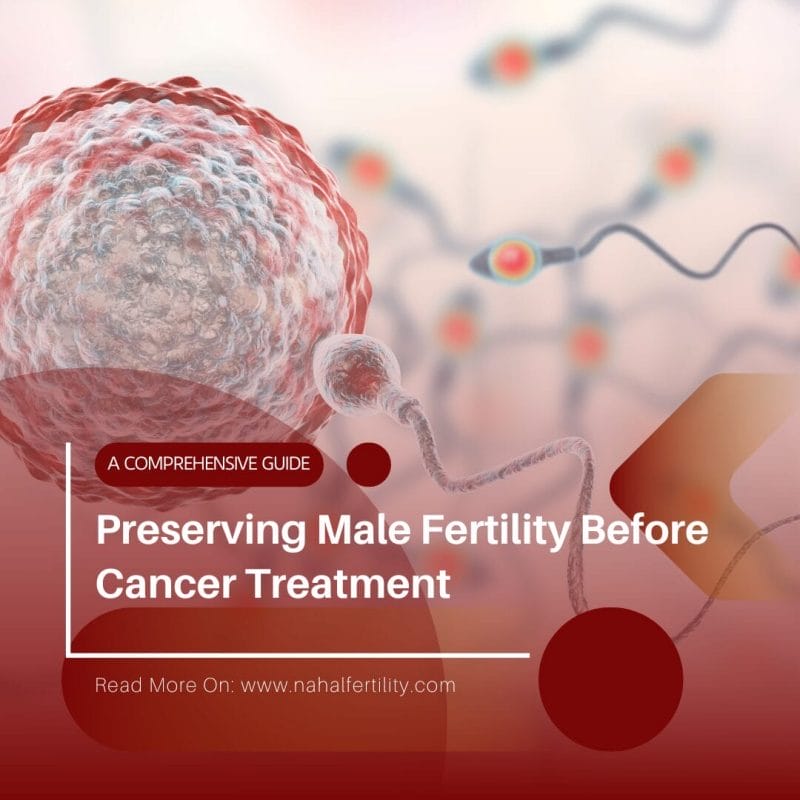For many women, hydrosalpinx, a condition marked by fluid-filled, blocked fallopian tubes, becomes an unforeseen obstacle. Often discovered during evaluations for infertility, it can leave couples feeling uncertain and overwhelmed.
In this article, we’ll explore hydrosalpinx in detail: what it is, how it affects fertility, its causes, symptoms, and most importantly, the options available to overcome it. Knowledge is power, and with the right guidance, even this challenging diagnosis can lead to hope and success.
What is Hydrosalpinx? A Closer Look
Hydrosalpinx is a medical condition where the fallopian tubes become blocked with fluid, causing them to swell. This blockage disrupts the natural pathway between the ovaries and the uterus, preventing eggs and sperm from meeting. While one blocked tube may still allow for natural conception, bilateral hydrosalpinx—when both tubes are blocked—requires medical intervention.
The condition not only creates physical barriers but also introduces risks for treatments like IVF. The toxic fluid within the tubes can seep into the uterus, hindering embryo implantation and increasing the risk of miscarriage.
What Is Bilateral Hydrosalpinx?
Bilateral hydrosalpinx is a condition where both fallopian tubes are blocked and filled with fluid, usually due to infection or inflammation. This condition prevents eggs from reaching the uterus, significantly reducing fertility.
The chances of natural conception are nearly zero with a bilateral hydrosalpinx. In these cases, medical intervention such as IVF becomes essential to achieve pregnancy.

The Essential Role of Fallopian Tubes in Reproduction
To understand the impact of hydrosalpinx, it’s important to first recognize the role of fallopian tubes. These slender tubes connect the ovaries to the uterus, serving as the meeting point for eggs and sperm. During ovulation, an egg is released into the tube, where fertilization occurs. The resulting embryo then travels to the uterus for implantation.
Hydrosalpinx disrupts this intricate process, making natural conception nearly impossible in severe cases. Even in less severe scenarios, the condition may lower fertility rates significantly and reduce the effectiveness of assisted reproductive technologies.
What Causes Hydrosalpinx?
Hydrosalpinx is caused by blockage and fluid buildup in the fallopian tube, often due to pelvic infections, sexually transmitted diseases like chlamydia, or past surgeries. These conditions damage the tube’s lining, leading to inflammation and impaired fertility. Understanding these causes can help in prevention and early diagnosis:
- Pelvic Inflammatory Disease (PID):
Chronic infections in the reproductive tract can cause scarring and blockages in the fallopian tubes. - Sexually Transmitted Infections (STIs):
Infections like chlamydia and gonorrhea are leading causes of PID and hydrosalpinx. - Endometriosis:
This condition causes tissue similar to the uterine lining to grow outside the uterus, leading to inflammation and blockages. - Previous Surgeries:
Surgeries for ectopic pregnancies or other pelvic conditions can result in scar tissue formation, increasing the risk of hydrosalpinx. - Tubal Ligation Complications:
Reversal of tubal ligation may sometimes lead to hydrosalpinx if scarring occurs.
Recognizing these risk factors is vital for early intervention and management.
Symptoms of Hydrosalpinx: What to Look For
Hydrosalpinx often goes unnoticed until fertility challenges arise, as it typically doesn’t present with obvious symptoms. However, some women may experience:
- Pelvic Pain: A persistent dull ache in the lower abdomen.
- Unusual Vaginal Discharge: A clear or watery discharge resulting from leaking fluid.
- Chronic Infections: Recurrent pelvic infections may signal underlying issues.
Since these symptoms can overlap with other conditions, diagnostic tests are essential for confirmation.
Pain from Hydrosalpinx
Pain from hydrosalpinx is typically mild and felt as a dull ache or discomfort in the lower abdomen. It may become more noticeable during menstruation, after physical activity, or if inflammation is present. While not all women experience pain, those who do should consult a specialist for proper diagnosis and management.
How is Hydrosalpinx Diagnosed?
Several diagnostic tools help confirm hydrosalpinx:
- Hysterosalpingogram (HSG): This X-ray procedure involves injecting a dye into the uterus and fallopian tubes to detect blockages.
- Sonohysterography: An ultrasound enhanced with saline solution provides a clear view of the reproductive organs.
- Laparoscopy: This minimally invasive surgery allows direct visualization of the fallopian tubes and surrounding tissues.
- Transvaginal Ultrasound: Though less detailed than other methods, it can sometimes detect fluid buildup in the tubes.
Prompt diagnosis ensures that women can explore treatment options tailored to their specific needs.

How to Treat Hydrosalpinx?
Treat hydrosalpinx by surgically removing or blocking the affected fallopian tube to prevent fluid from impairing fertility. Salpingectomy is the most common procedure. In some cases, antibiotics treat infections, but surgery is usually required before IVF to improve success rates. Managing hydrosalpinx requires a personalized approach. Let’s take a closer look into treatment options:
1. Surgical Interventions
- Salpingectomy: The removal of the affected tube(s) eliminates the harmful fluid and improves IVF outcomes.
- Tubal Repair: In some cases, surgeons can repair the tube, restoring its function.
2. Assisted Reproductive Technologies (ART)
- In-Vitro Fertilization (IVF): For many women, IVF is the most viable option. IVF bypasses the fallopian tubes entirely, offering a direct route to conception.
- IVF Post-Surgery: Undergoing salpingectomy before IVF improves implantation success rates by eliminating fluid backflow.
3. Combined Approaches
Women with severe hydrosalpinx may benefit from a combination of surgical and ART methods, maximizing their chances of pregnancy.
“Ask questions, explore your options, and never give up. Your fertility journey is unique, and every step brings you closer to your goal.”
What Happens If Hydrosalpinx Is Left Untreated?
If left untreated, hydrosalpinx can cause chronic pelvic pain, increase the risk of ectopic pregnancy, and significantly reduce fertility. The fluid inside the blocked tubes can leak into the uterus, harming embryo implantation and lowering IVF success rates.
The Impact of Hydrosalpinx on Fertility
The primary concern with hydrosalpinx is its effect on fertility. Blocked fallopian tubes prevent the egg and sperm from meeting, making natural conception difficult or impossible. Even with one functioning tube, the chances of conception are reduced due to alternating ovulation between ovaries.
Additionally, the toxic fluid in the blocked tubes can:
- Interfere with embryo implantation during IVF.
- Increase the risk of miscarriage.
- Create an unfavorable uterine environment.
Addressing hydrosalpinx before undergoing fertility treatments significantly improves the likelihood of success.

Successful Pregnancy with Hydrosalpinx
While hydrosalpinx poses challenges, many women achieve successful pregnancies through tailored treatments like surgery and IVF. Addressing the condition early and working with experienced fertility specialists greatly increases the odds of a healthy pregnancy.
Emotional Support and Coping
A hydrosalpinx diagnosis can be emotionally draining. Joining support groups, seeking counseling, and connecting with others who’ve faced similar challenges can provide comfort and guidance. Building a strong support system is key to navigating this journey with optimism.
Conclusion:
While hydrosalpinx presents significant fertility challenges, it is far from insurmountable. With timely diagnosis, personalized treatments, and unwavering determination, many women overcome this condition to achieve their dreams of parenthood.
If you’re facing hydrosalpinx or other fertility issues, reach out to our team at Nahal Fertility Clinic. Together, we’ll explore your options and craft a plan that works for you.
Frequently Asked Questions About Hydrosalpinx (FAQs)
Can hydrosalpinx go away on its own?
No, hydrosalpinx does not resolve on its own and requires medical treatment such as surgery or assisted reproductive technologies.
Does hydrosalpinx cause weight gain?
Hydrosalpinx itself does not directly cause weight gain, but related conditions like inflammation or hormonal issues may contribute.
Does hydrosalpinx cause bloating?
Yes, some women with hydrosalpinx may experience bloating due to fluid buildup and inflammation in the pelvic area.
How serious is hydrosalpinx?
Hydrosalpinx significantly impacts fertility and may require surgical intervention. Left untreated, it can hinder IVF success and increase miscarriage risks.
What STD causes hydrosalpinx?
STIs like chlamydia and gonorrhea are common causes. Early treatment of these infections reduces the risk of developing hydrosalpinx.
Does a hydrosalpinx need to be removed?
In many cases, removal of the affected tube improves fertility outcomes, especially for women undergoing IVF.
Is hydrosalpinx a cyst?
No, hydrosalpinx is not a cyst. It is a condition where the fallopian tube fills with fluid, causing swelling and blockage.






